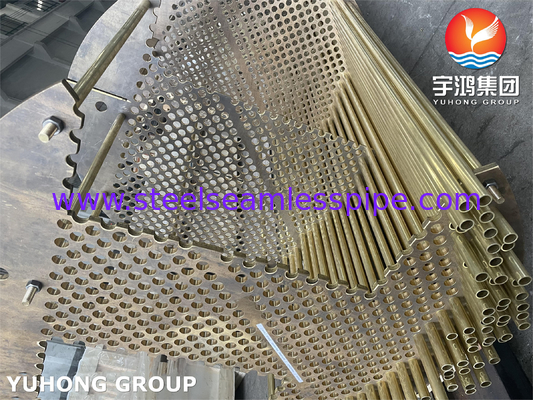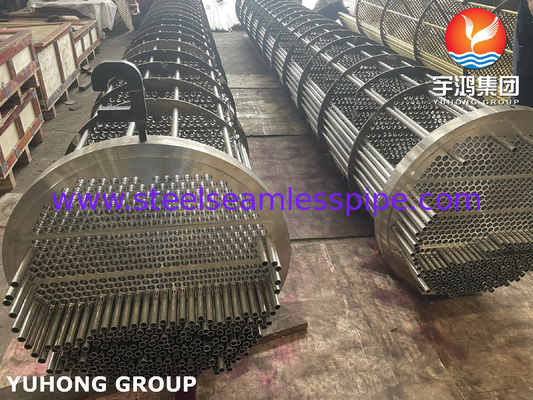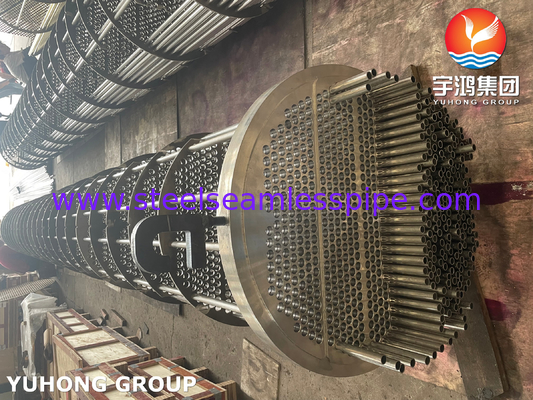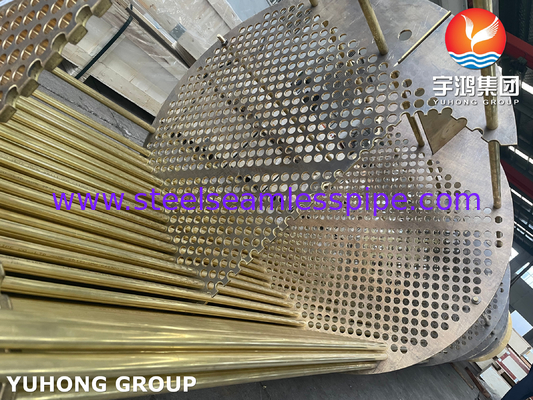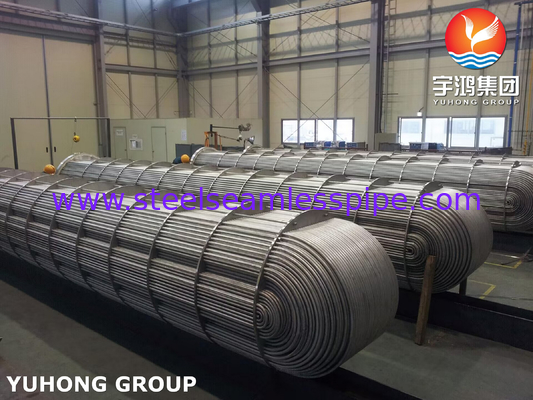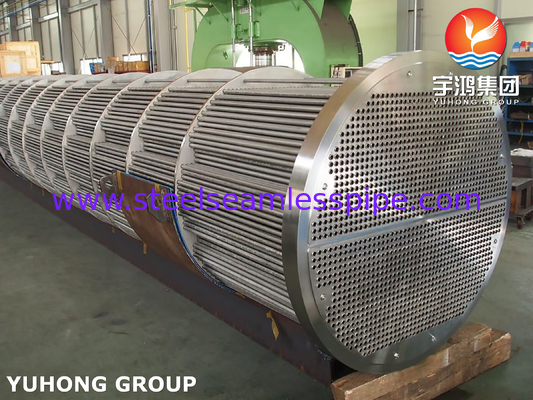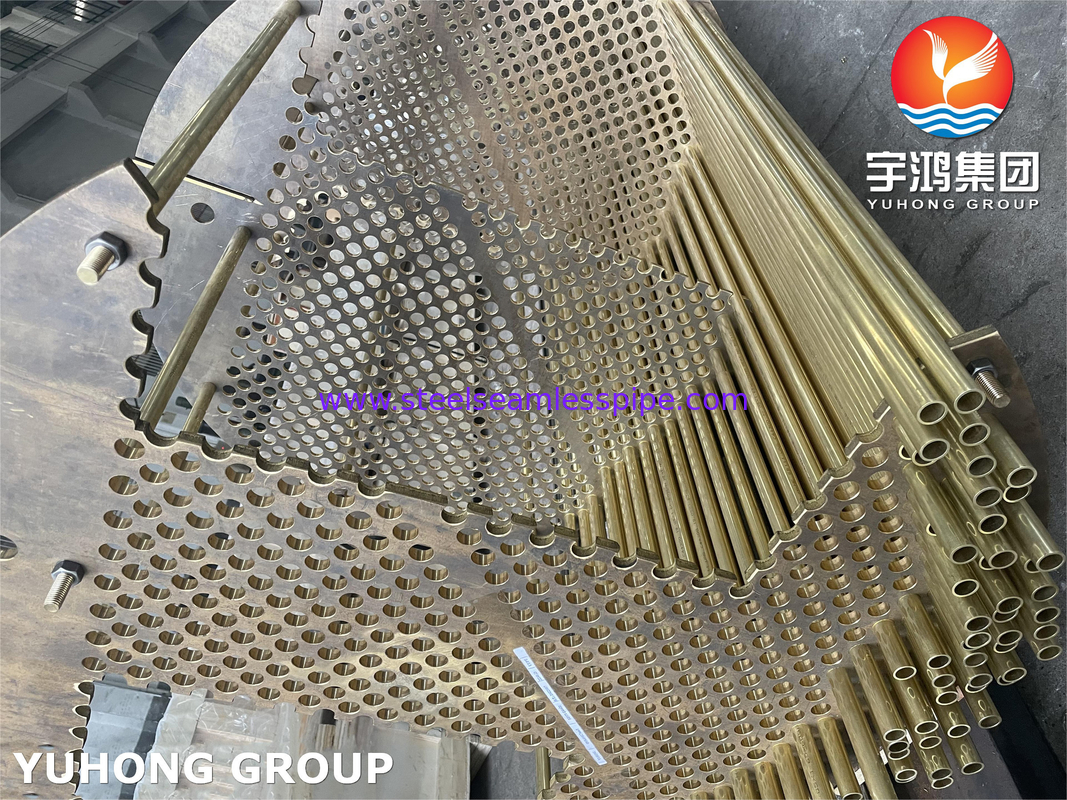Tube Bundle
The tube bundle in the heat exchanger refers to the pipe system used to transfer heat in the heat exchanger. A tube bundle is usually composed of multiple tubes that are connected together by tube sheets or tube bundle boxes to form an overall structure.
Tube bundles in heat exchangers are generally divided into two types: shell and tube heat exchangers and tube bundle heat exchangers.
In a shell and tube heat exchanger, the tubes are placed in a shell, the heat transfer medium flows through the inside of the tubes, and the heat-exchanged medium flows through the pipes in the shell. The tube bundle of a shell and tube heat exchanger is usually composed of multiple tubes arranged in parallel, and the two ends of the tube bundle are connected by tube sheets.
In a tube bundle heat exchanger, the tubes are placed directly in a sealed tube bundle box. The heat transfer medium flows through the inside of the tubes, and the heat-exchanged medium flows through the pipes in the tube bundle box. The tube bundle of a tube bundle heat exchanger is usually composed of multiple tubes arranged in a spiral, and the two ends of the tube bundle are connected through the inlet and outlet of the tube bundle box.
In heat exchangers, the design and arrangement of tube bundles have a great impact on performance indicators such as heat transfer efficiency and pressure loss. Common tube bundle designs include parallel flow, counterflow and cross flow, which are selected according to specific heat exchange needs and process requirements. In addition, the material of the tube bundle also needs to be selected according to the properties of the medium and process conditions. Common materials include stainless steel, copper alloy, titanium alloy, etc.
The production process of a tube bundle typically involves the following steps:
1. Design: The first step in the production process is the design of the tube bundle. This includes determining the required specifications such as the number and size of tubes, the material of construction, and the overall dimensions.
2. Material selection: Once the design is finalized, the appropriate materials for the tubes and tube sheets are selected. This is typically based on factors such as the operating conditions, fluid being processed, and cost considerations.
3. Tube fabrication: The tubes are then fabricated to the required dimensions. This may involve processes such as cutting, bending, and welding. The tubes are often made from materials such as stainless steel or copper, which are known for their corrosion resistance and heat transfer properties.
4. Tube sheet fabrication: The tube sheet, which acts as a support for the tubes, is fabricated separately. This may involve processes such as drilling and machining to create holes for the tubes to be inserted into.
5. Tube insertion: The tubes are then inserted into the tube sheet. This can be done using various methods such as rolling, expanding, or welding. The goal is to create a secure and leak-proof connection between the tubes and the tube sheet.
6. Tube bundle assembly: Once the tubes are inserted into the tube sheet, they are bundled together using tie rods or spacers. This helps to maintain the desired spacing between the tubes and ensures proper flow distribution.
7. Testing: Before the tube bundle is ready for use, it undergoes various tests to ensure its quality and performance. This may include pressure testing, leak testing, and dimensional checks.
8. Finishing: Finally, the tube bundle is cleaned, painted, and coated to protect it from corrosion and other environmental factors.
Overall, the production process of a tube bundle involves a combination of fabrication, assembly, and testing to create a high-quality and reliable product.
Applications Of Tube Bundles:
1. Heat Exchangers: Tube bundles are extensively used in heat exchangers to transfer heat between two fluids. The hot fluid flows through the tubes, while the cold fluid passes around the tubes, allowing for efficient heat transfer.
2. Condensers: Tube bundles are also used in condensers to convert vapor into liquid. The vapor passes through the tubes, and cooling water or air flows around the tubes, causing the vapor to condense.
3. Boilers: Tube bundles are an essential component of boilers, where they help in the generation of steam. The combustion gases flow through the tubes, transferring heat to the water surrounding the tubes, thus producing steam.
4. Air Coolers: Tube bundles are used in air coolers to cool down hot air. The hot air passes through the tubes, while cool water or air flows around the tubes, extracting heat from the air.
5. Oil Coolers: Tube bundles are employed in oil coolers to cool down hot oil. The hot oil flows through the tubes, and cooling water or air passes around the tubes, removing heat from the oil.
6. Refrigeration Systems: Tube bundles are used in refrigeration systems to facilitate heat transfer between the refrigerant and the surrounding environment. The refrigerant flows through the tubes, while cooling water or air is circulated around the tubes.
7. Power Plants: Tube bundles are utilized in power plants for various applications, such as steam generation, condensation, and heat recovery. They play a crucial role in the efficient operation of power generation processes.



 Your message must be between 20-3,000 characters!
Your message must be between 20-3,000 characters! Please check your E-mail!
Please check your E-mail!  Your message must be between 20-3,000 characters!
Your message must be between 20-3,000 characters! Please check your E-mail!
Please check your E-mail! 
